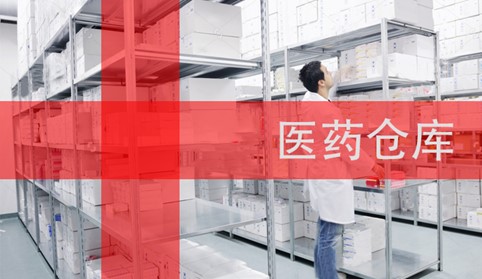
The NHSA-National Healthcare Security Administration in the body in charge of the governance of the pharmaceutical system in China.
Recently, following a request from another State administration -the Chinese People’s Political Consultative Conference-, the NHSA intervened to clarify the effectiveness and the scope of the two main regulatory instruments for the governance of pharmaceutical expenditure:
- Two-Invoice System
- Volume-Based Procurement
both adopted with the aim of containing the pharmaceutical expenditure with a great impact on drug logistics. The NHSA rejected the request for the abrogation of the “Two-Invoice System”, justifying the effectiveness of both instruments for the governance and the control of the pharmaceutical expenditure and the distribution of drug in China.
However, the Administration opened up for possible corrective measures aimed at further improving the effectiveness of the system.
The governance of the drug system and logistics in China
The NHSA – National Healthcare Security Administration is the body under the State Council in charge of the governance of the healthcare and pharmaceutical system in China.
In particular, the NHSA supervises the financial resources allocated to cover the national healthcare and pharmaceutical expenditure.
The National Committee of the People’s Political Consultative Conference requested the NHSA to abolish the Two-Invoice system, considering it no longer effective in the face of the ever-increasing scale of centralized purchasing through the Volume-Based Procurement system.
On 12 October 2022, the NHSA rejected the request by publishing an important clarification note, No. 188/2022, to define the purpose of the pricing policies pursued with these two instruments and their respective scope of application, which have a direct impact on both the distribution system and the drug supply chain.
The “Two-Invoice System”
In 2016, the “Two-Invoice System” was introduced by decision of the State Council, representing the first major reform in the drug logistics in China. The primary purpose of the measure was to counter the excessive rise in the selling price of the drug to the end user, made up of numerous “portions” due to the length of the distribution chain.
This generated an unjustified increase on the pharmaceutical expenditure by public hospitals that purchased the drug at prices up to ten times higher than the ex-factory price.
Moreover, there was also the additional margin applied by the hospital when selling the drug to the patient.
Under the “Two-Invoice” system, which is now mandatory for the whole territory of China, the distribution chain is shortened to two steps with only one distributor between the manufacturer and the end user. This generated considerable savings in terms of containing the selling price of the drug.
In this regard, the authorities subsequently intervened with measures to reduce to zero the portion attributable to the hospital, granting funding to hospitals against losses.
However, the new regime forced the entire drug logistics sector into a complete reorganization. Numerous M&A operations saw the largest distributors absorb smaller competitors no longer able to cover large areas over long distances.
The Volume-Based Procurement
The other major reform concerns the public procurement system, through the introduction of the Volume-Based Procurement or VBP.
The VBP is essentially an evolution of a common centralized purchasing system (also well known in Europe), which provides for the negotiation with pharmaceutical companies of the purchase of considerable quantities of certain active ingredients with the application of high discounts, even over 90% of the initial sale price.
This mechanism, initially operated on an experimental basis, has been gradually extended to an ever-increasing quantity and number of active ingredients.
Furthermore, the State Council has recently introduced the obligation for hospital facilities to enter into supply contracts with the companies awarded of the individual VBP lots.
The logistics of drug in China and the seller’s liability for the transport risk
The measure issued by the NHSA analyses these two instruments from the point of view of its core competence, i.e. the containment of national pharmaceutical expenditure, and confirms the effectiveness without any doubt.
The impact that these measures have on drug logistics, as well as the ability to change both the distribution structure and responsibilities, is evident.
The NHSA measure also emphasizes the virtuous mechanisms on contractual dynamics and the allocation of responsibilities between the distribution actors: manufacturer, distributor and hospital facility.
In fact, the VBP system makes the contracts between these three parties mandatory, obligatorily assigning the responsibility for the distribution phase, and thus also the risk, to the manufacturer, as seller of the medicinal product.
As follows, the hospital no longer has any uncertainty in identifying the responsible for any shortcomings in the logistics phase.
This perfectly combines with the Two-Invoice mechanism, provided that the short supply chain is a factor in reducing the risk of default for the manufacturer vis-à-vis the purchasing hospital facility.
This leads the NHSA to confirm the necessity to maintain both measures, which complement one other.
Furthermore, in terms of the total expenditure borne by public health facilities for chemical synthesis and biological drugs, VBP currently covers the 35% of national pharmaceutical expenditure, while the remaining 65% is represented by either innovative or patent-protected drugs, for which there is only one company capable of producing or marketing the drug.
For this kind of purchases, the Two-Invoice system is the only safeguard against an uncontrolled increase in costs.
The impact of governance policies on next-generation biotechnology drugs and distribution in remote areas
Biological and biotechnological drugs appear among the drugs for which the “Two-invoice” system is the only instrument for governing pharmaceutical expenditure.
Biotechnological drugs represent the chosen field for pharmaceutical competition in the coming years due to the imminent and progressive expiry of numerous patents linked to as many molecules, mostly intended to treat diseases of great social importance such as cancer or degenerative diseases.
In fact, it is well known that biological and biotechnological drugs are sold at a much higher cost than chemically synthesized drugs, given the high research and production costs.
The NHSA measure closes with a consideration on future amendments aimed at improving the process of drug pricing according to market rules, without losing the positive results generated hitherto.
However, it should be noted that exceptional situations will require specific policies, such as the need to reach hospitals and pharmaceutical dispensaries located in remote agricultural areas or very far from urban centers. In these areas, a partial exemption to the “Two-Invoice” mechanism which allows the addition of a further link in the distribution chain, enabling the widespread distribution of drugs, is currently in force.
Avv. Andrea Sorgato – China Desk Zunarelli Law Firm








